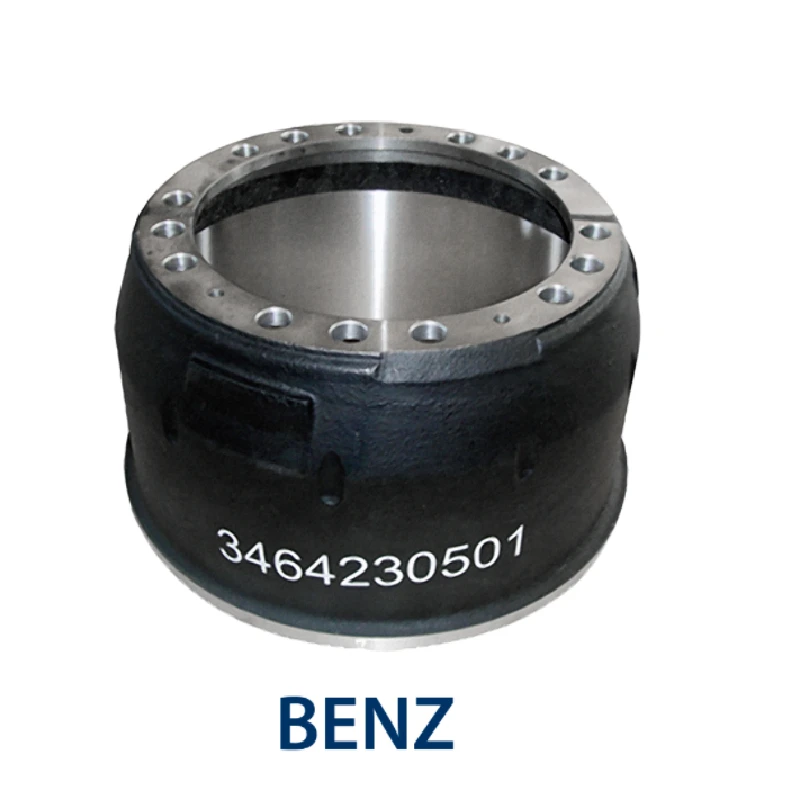Nov . 11, 2024 08:03 Back to list
finned drum brakes
Understanding Finned Drum Brakes Design, Functionality, and Applications
Finned drum brakes are a critical component in modern automotive engineering, known for their effectiveness in managing heat generated during braking. As vehicles traverse various terrains and conditions, the demand for reliable braking systems has led to innovations like finned drum brakes, which enhance performance, safety, and longevity. This article delves into the design, functionality, and applications of finned drum brakes.
Design and Structure
Finned drum brakes primarily consist of a drum, backing plate, brake shoes, and the necessary hardware to create friction and engage the braking system. The unique feature of finned drum brakes lies in their finned design which protrudes from the surface of the drum. These fins serve the vital purpose of dissipating heat generated when brakes are applied.
The drums are typically made from high-strength materials that can withstand the high temperatures produced during braking. The addition of fins significantly increases the surface area, allowing for greater airflow around the brake components. This design not only aids in cooling the brakes but also helps prevent brake fade—a condition where the brake begins to lose effectiveness due to overheating.
Functionality
When the driver depresses the brake pedal, hydraulic fluid is sent through the brake line to the brake cylinder, which pushes the shoes against the spinning drum. The friction generated between the shoes and the drum causes the vehicle to slow down or stop. In a finned drum brake system, the fins play a crucial role in managing heat.
As the brake operates, the friction causes the drum’s temperature to rise. With conventional drum brakes, this can lead to diminishing performance as heat builds up, leading to brake fade. However, the fins transition heat away from the drum effectively, allowing the brakes to maintain optimal performance for a longer duration.
This heat management feature makes finned drum brakes particularly advantageous for vehicles that often encounter demanding driving conditions, such as heavy trucks, buses, and performance cars
. These vehicles require reliable braking systems due to their increased weight and speed, and effective heat dissipation is essential for maintaining safety.finned drum brakes

Benefits of Finned Drum Brakes
The benefits of finned drum brakes extend beyond improved heat dissipation. Their design contributes to a more consistent pedal feel, as the brakes do not lose effectiveness due to overheating. Additionally, they typically wear more slowly than standard drum brakes, leading to reduced maintenance costs and a longer lifespan for the brake components.
Moreover, the finned design can enhance the aesthetic appeal of the braking system. Many automotive enthusiasts appreciate the look of exposed fins, associating them with high-performance and custom vehicles. This visually appealing aspect does not compromise functionality and can even improve performance.
Applications
Finned drum brakes find applications across various sectors. In the automotive industry, they are commonly used in high-performance vehicles, such as sports cars and racing cars, where stopping power and temperature management are critical. They are also popular in commercial vehicles like buses and trucks, which often carry heavy loads and require robust braking systems to ensure safety.
Beyond conventional vehicles, finned drum brakes are also employed in some industrial applications, including machinery and heavy equipment. These brakes provide the necessary stopping power while reducing the risk of overheating, ensuring machinery operates efficiently and safely.
Conclusion
Finned drum brakes represent a significant advancement in braking technology, addressing key challenges associated with heat management and braking performance. Their innovative design combines aesthetics and functionality, making them a popular choice for both performance vehicles and commercial applications. As automotive technology continues to evolve, finned drum brakes will undoubtedly remain a vital component in ensuring safety and efficiency on the road.
-
Durable Brake Drum MAZ for Heavy Duty Trucks | High Performance
NewsAug.26,2025
-
FUWA: Premium Quality, Reliable Performance & Innovative Solutions
NewsAug.25,2025
-
Liza Brake Drum: Superior Quality & Performance for Safe Driving
NewsAug.24,2025
-
Iveco Brake Drum | Premium OE Quality for Daily & Eurocargo
NewsAug.22,2025
-
Your Brake Drum Man: Quality & Performance Parts
NewsAug.21,2025
-
Explore Japan: Ultimate Travel Guide & Authentic Experiences
NewsAug.19,2025
